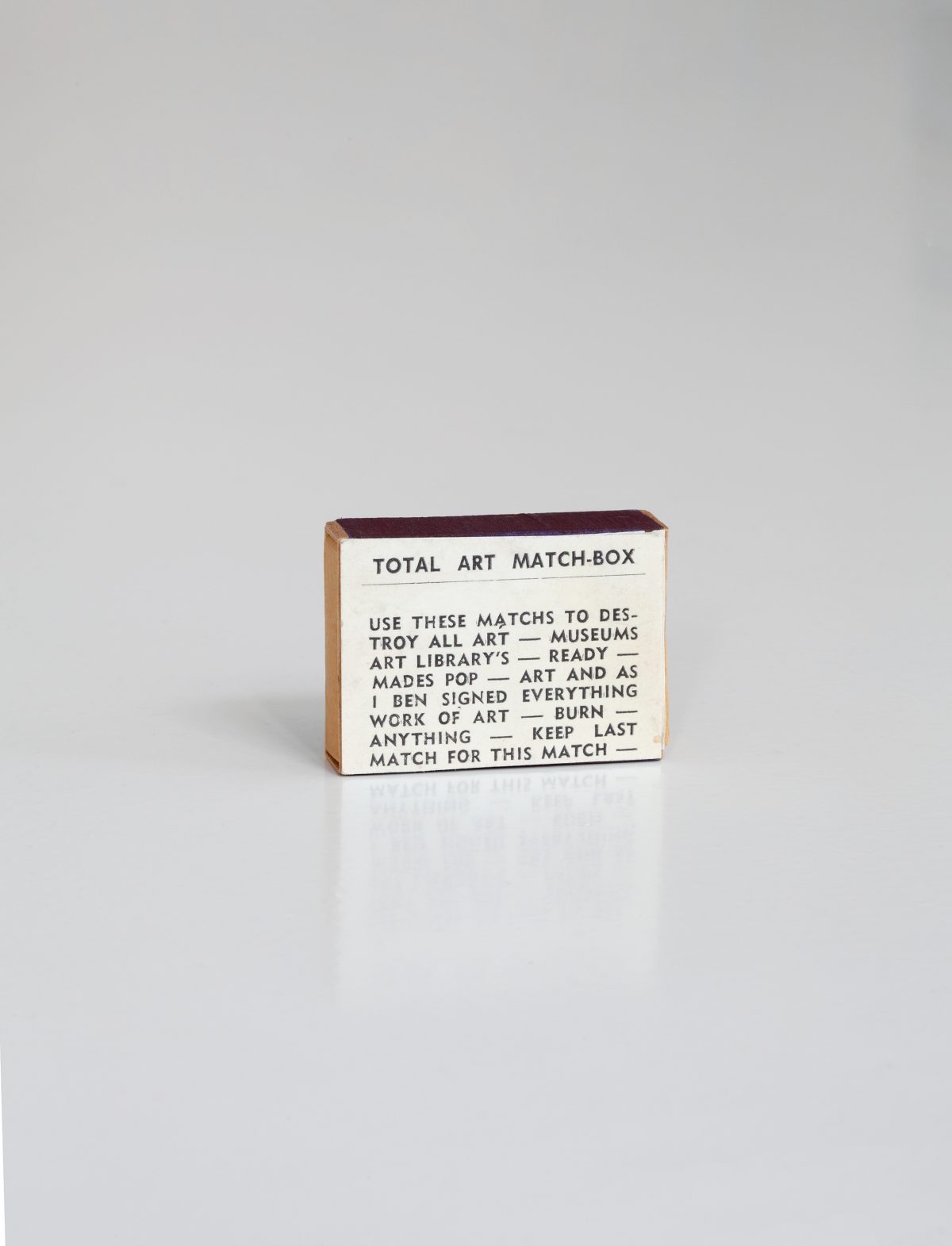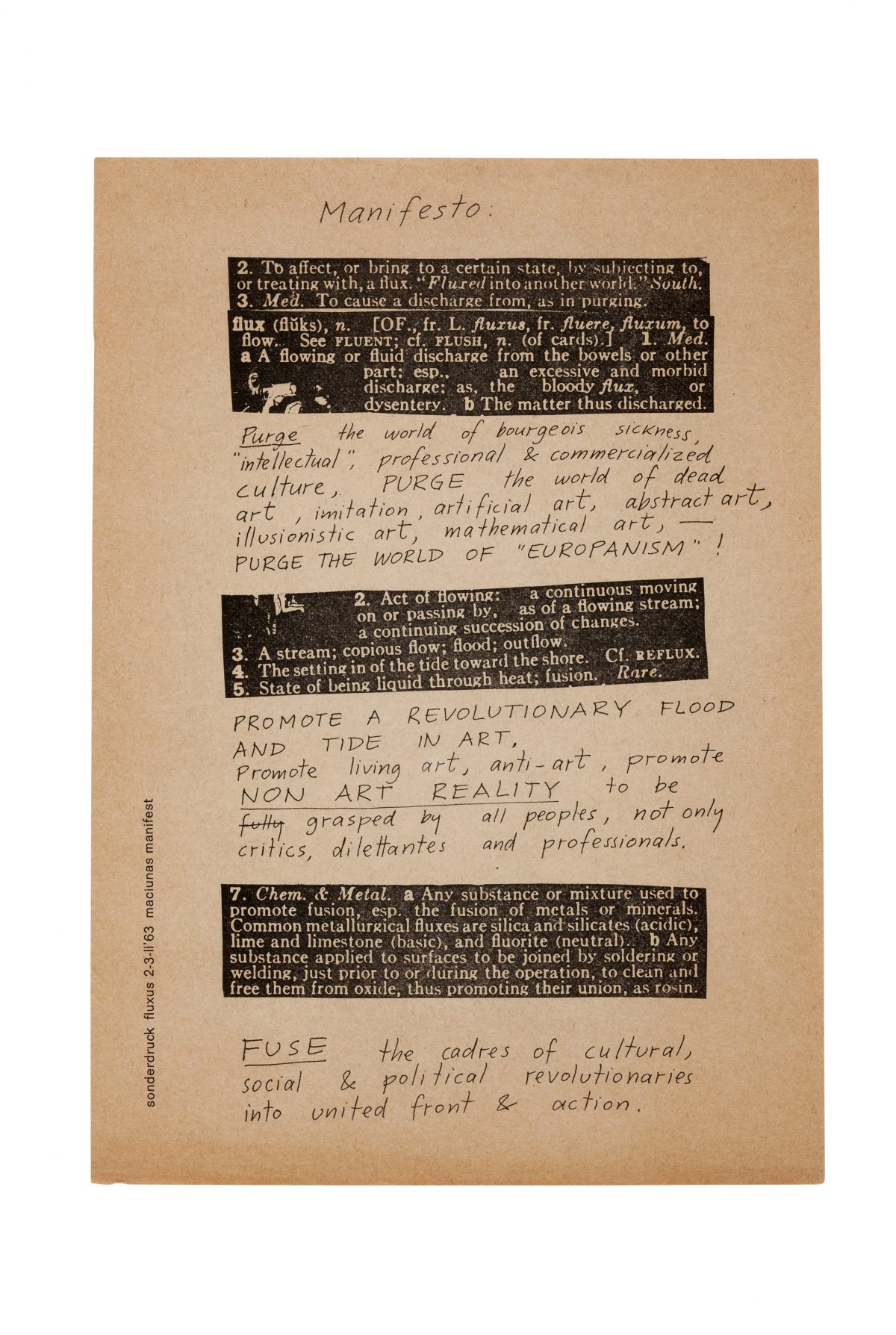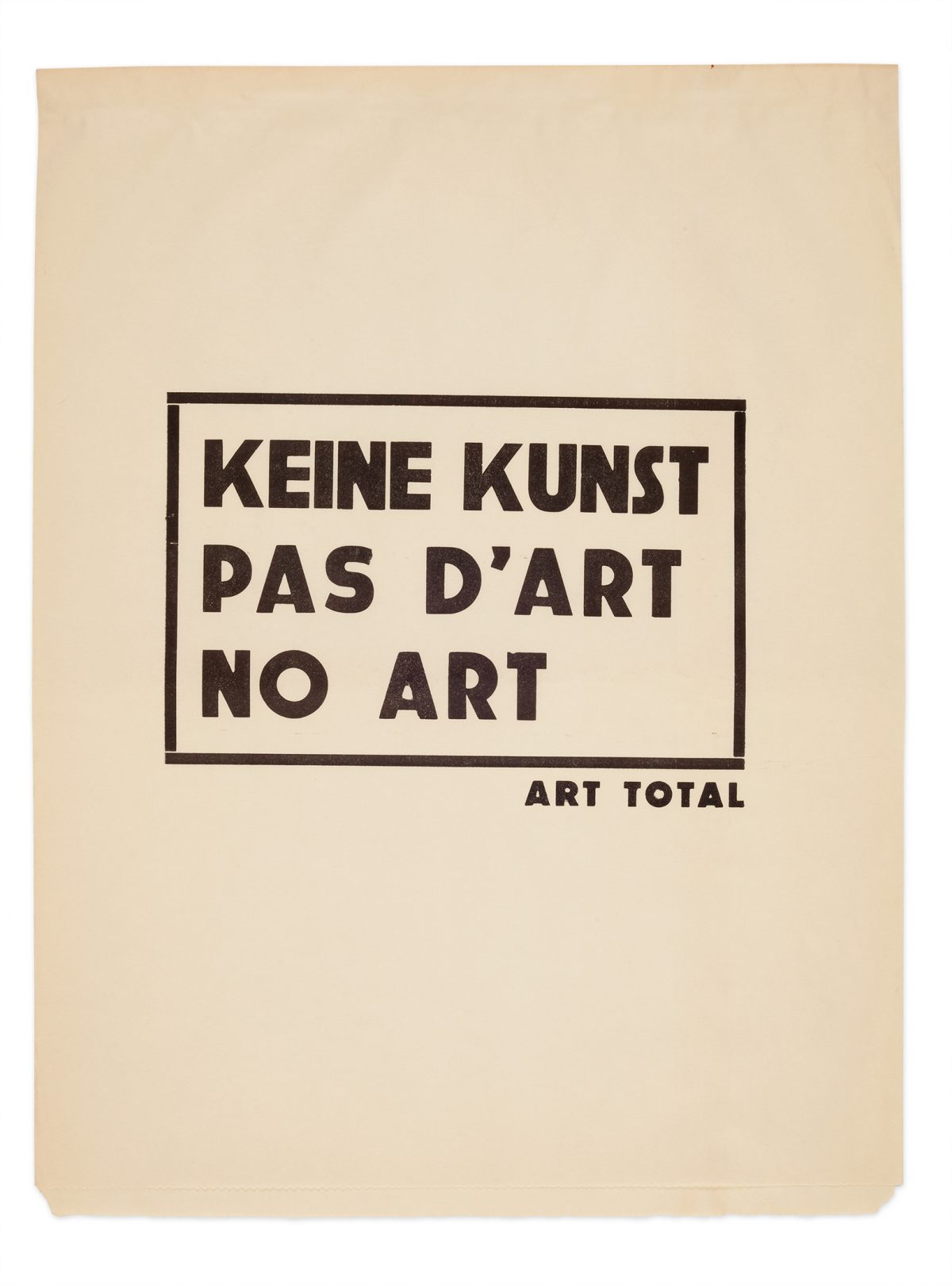FLUXUS: Kunst = Leben
„Wenn du es definieren kannst, ist es kein Fluxus.“ Mit diesem Ausspruch verwies der Fluxus-Dichter Emmett Williams (1925-2007) bereits auf die Schwierigkeit das Phänomen Fluxus zu fassen. Dessen Akteur*innen ließen in ihre Arbeiten und Konzepte stets Humor mit einfließen. Als Logo entwickelte sich das Haupt des aztekischen Sonnengottes Tonatiuh – mit herausgestreckter Zunge.
George Maciunas, Begründer und Hauptorganisator von Fluxus, hatte den Begriff 1960 als Titel für ein geplantes Kunstmagazin konzipiert. Neben der lateinischen Bedeutung des Wortes (fließend/ver- gänglich) faszinierte ihn besonders die eigenartige Definition des Begriffes flux aus dem Bereich der Medizin: „fließende oder flüssige Entleerung der Gedärme oder anderer Organe.“
In seinem Fluxus-Manifest, das Maciunas 1963 beim FESTUM FLUXORUM. FLUXUS in Düsseldorf vorstellte, forderte er die „Trennung von Kunst und Leben“ aufzuheben. Er postulierte eine Antikunst, die sich gegen den überhöhten Status des Künstlers und des Kunst-Objekts als funktionslose Ware richtet.
Die Ziele von Fluxus sollten sozialer und nicht ästhetischer Natur sein. Dabei orientierte er sich an den Ideen der LEF Gruppe (1922-1929), einem Zusammenschluss linksorientierter, avantgardistischer Künstler Russlands, die nach der Oktoberrevolution im Zuge einer neuen proletarischen Kunst die Gleichung Leben = Kunst = Arbeit propagierten.
In aller Welt etablierten Konzerte, Festivals, Publikationen und Artefakte den Begriff Fluxus. Die Experimente des Komponisten John Cage (1912-1992) mit Klang- und Zufallsoperationen fanden ebenso Widerhall in dieser Gemeinschaft junger Künstler*innen wie Marcel Duchamps (1887-1968) Readymades. Künstlerische Arbeiten, die den erhabenen Status des Kunstwerks bewusst verfehlten, standen exemplarisch für die angestrebte Versöhnung von Kunst und Gesellschaft. Insbesondere im kleinen Format zeigt sich Fluxus dabei von seiner poetischen und subversiven Seite.
FLUXUS: Art = Life
“If you can define it, it is not Fluxus.” With this saying, the Fluxus poet Emmett Williams (1925-2007) already referred to the difficulty of grasping the Fluxus phenomenon. Its protagonists always allowed cheeky humour to flow into their works and concepts. The logo was the head of the Aztec sun god Tonatiuh – with his tongue stuck out.
George Maciunas, founder and main organiser of Fluxus, had conceived the term as the title for a planned art magazine in 1960. In addition to the Latin meaning of the word (flowing / transient), he was particularly fascinated by the peculiar definition of the term flux in the field of medicine: “flowing or liquid emptying of the bowels or other organs”.
In his Fluxus Manifesto, which Maciunas presented in 1963 at the FESTUM FLUXORUM: FLUXUS in Düsseldorf, he called for the “separation of art and life” to be abolished. He postulated an anti-art that was directed against the exaggerated status of the artist and the art objects as functionless goods.
The goals of Fluxus were to be social and not aesthetic. In this, Maciunas was guided by the ideas of the LEF Group (1922-1929), an association of leftist, avant-garde Russian artists who, after the October Revolution, had propagated the equation life = art = work in the course of a new proletarian art.
Concerts, festivals, publications and artefacts established the term Fluxus all over the world. The experiments of the composer John Cage (1912-1992) with sound and chance operations also reverberated in this community of young artists, just as Marcel Duchamp’s (1887-1968) readymades. Artistic works that deliberately missed the sublime status of the artwork were exemplary for the desired reconciliation of art and society. Fluxus shows its poetic and subversive side, especially in the small format.


